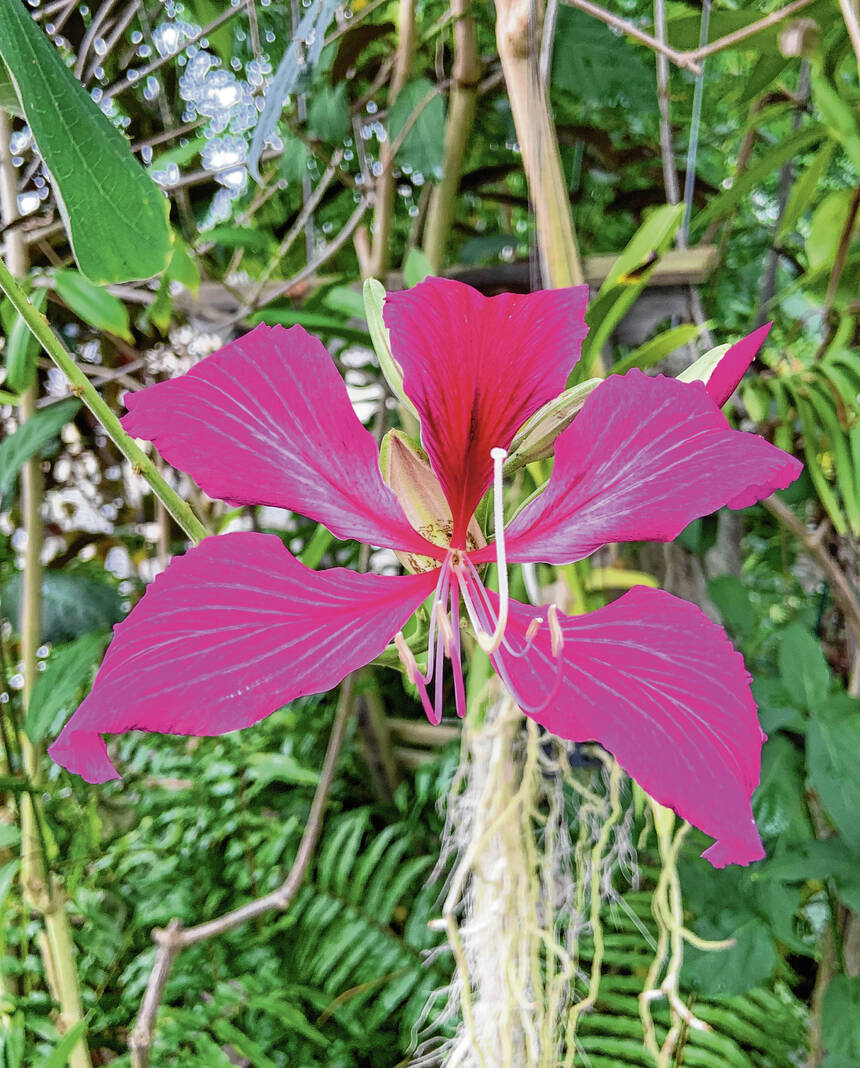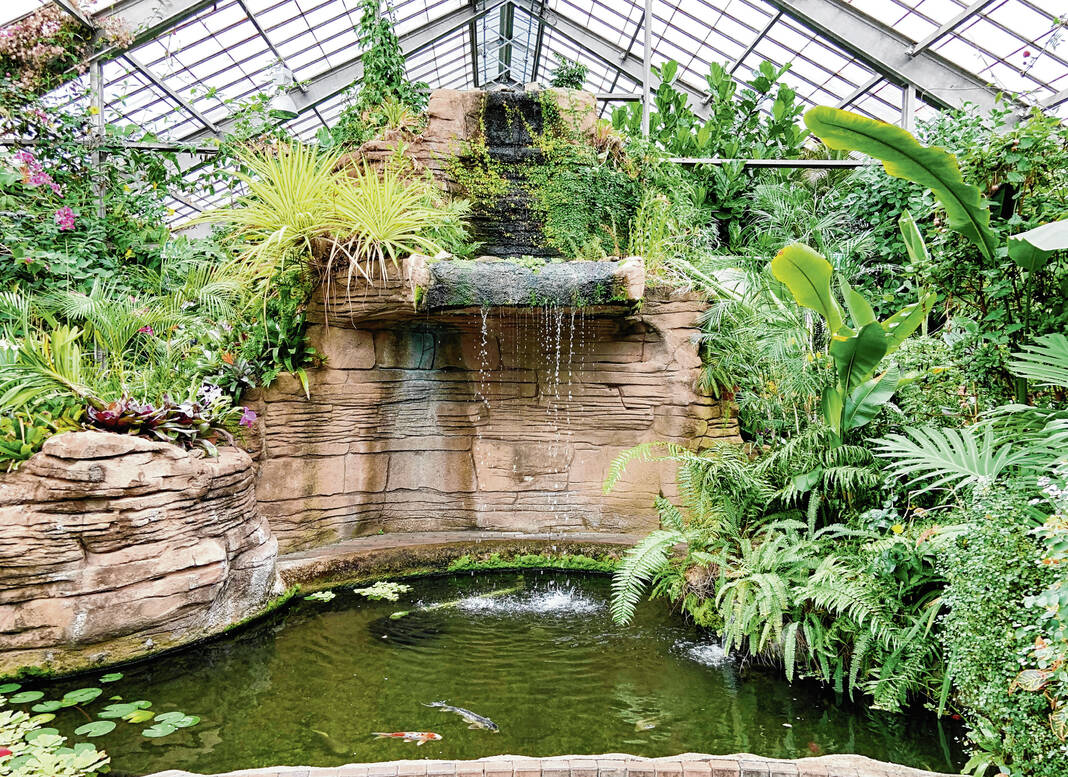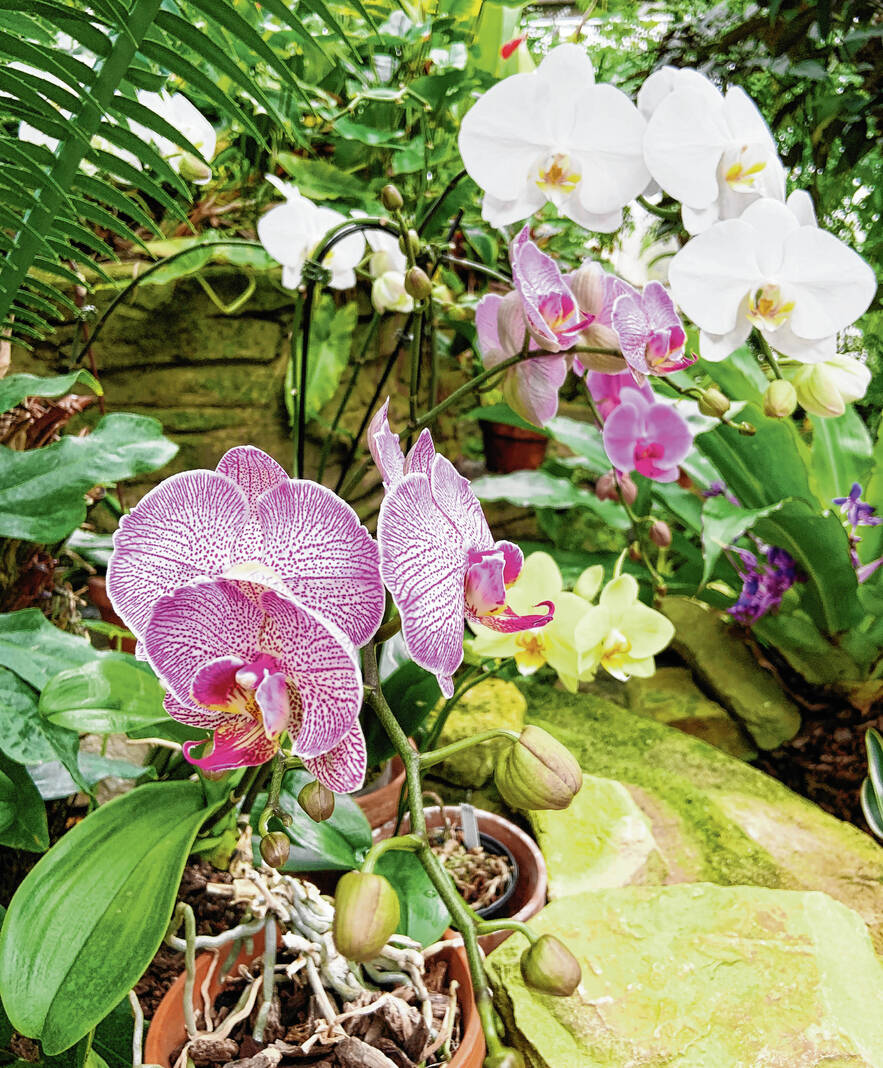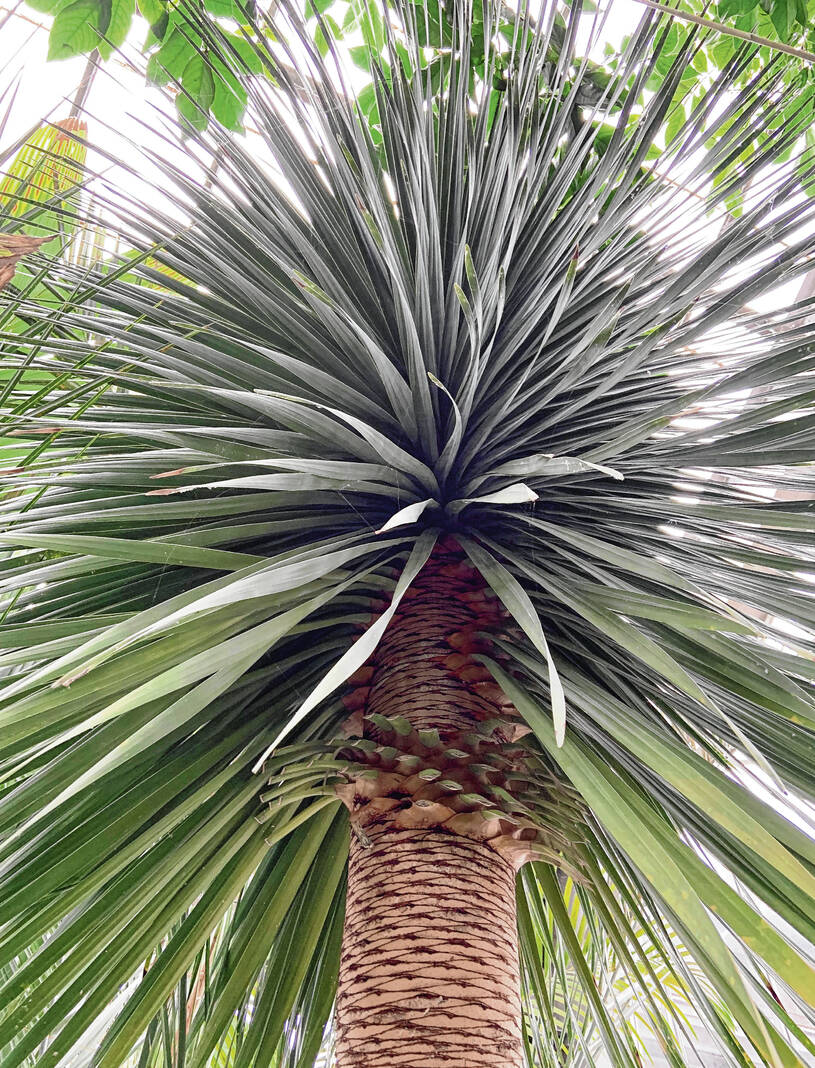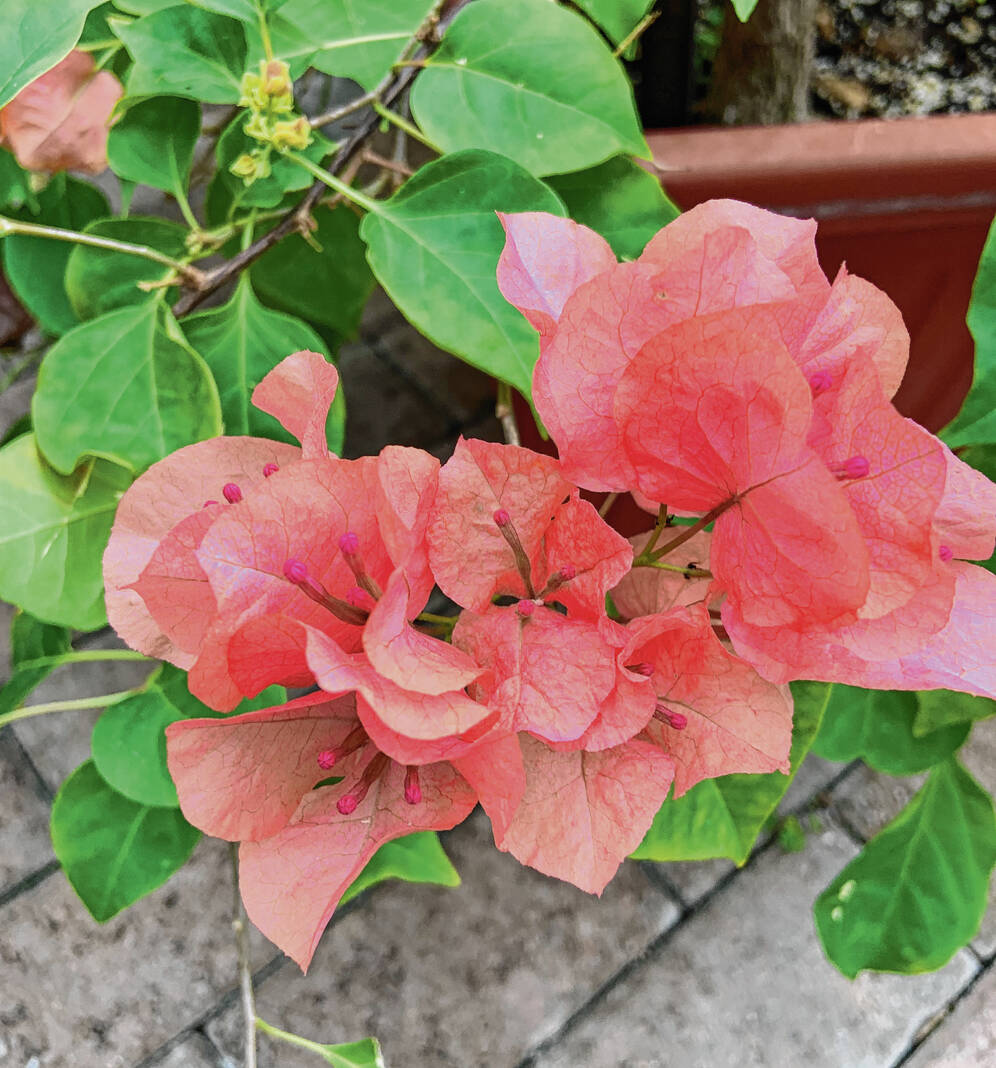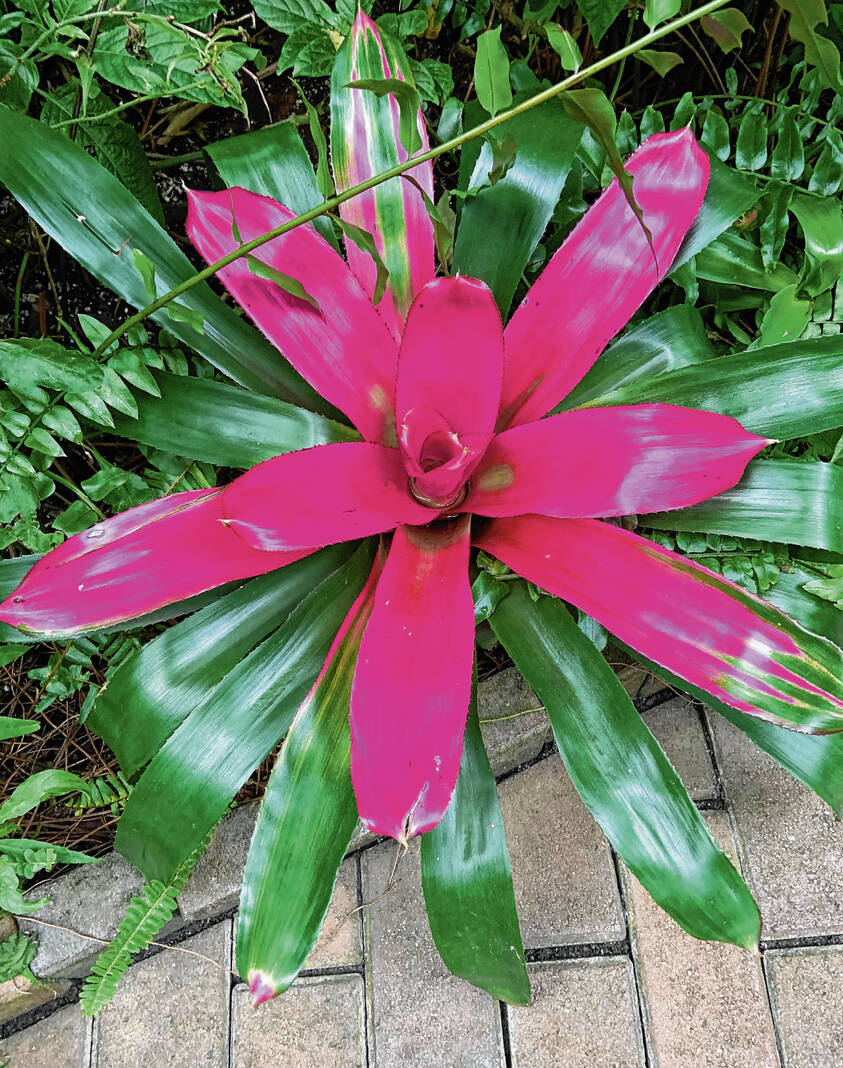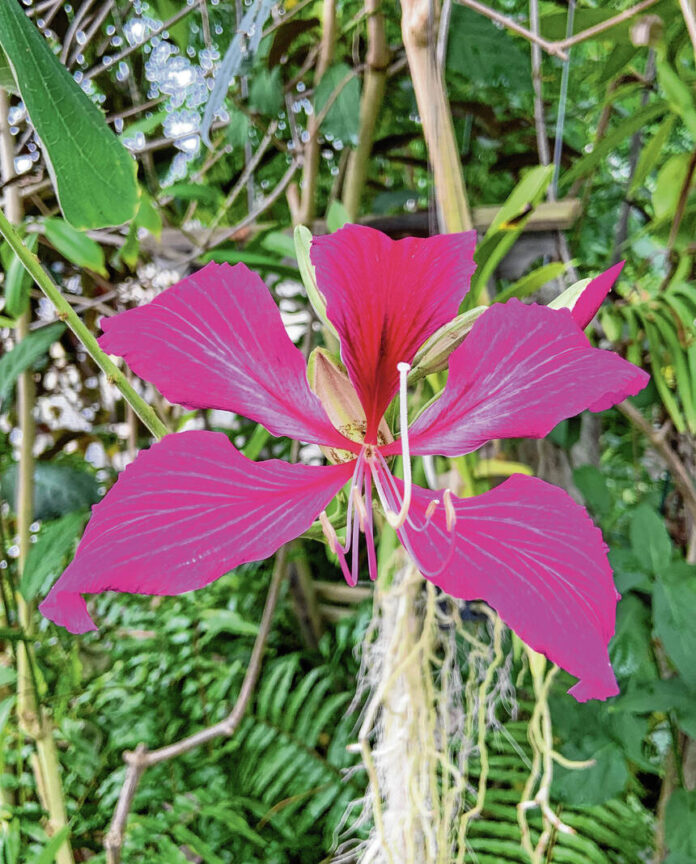
The bloom of the purple orchid tree, native to south China, growing inside the Garfield Park Conservatory on the southside of Indianapolis on Jan. 13. The Conservatory contains more than 10,000 square feet of tropical trees, flowers and other plants, along with a 15-feet-high waterfall, ponds, fish and other animals.
RYAN TRARES | DAILY JOURNAL
Light filtered through the towering palms, banana trees and other plants forming a canopy over the cobbled path.
Orchids of all shapes, colors and varities bloomed closer to the ground. The sweet smell of flowers drifted on an artificial breeze. The sound of a soothing waterfall echoed through the space, with koi fish splashing lazily on the surface.
Standing inside the warmth of the Garfield Park Conservatory, it was easy to forget the flurries swirling just outside the walls.
The Garfield Park Conservatory brings a touch of the tropics to Hoosiers year-round, with more than 100 species of plants from Southeast Asia, Africa, Central and South America growing in a 10,000-square-feet greenhouse.
The southside conservatory has been in operation since 1954, with the rain forest plants growing for the past 25 years. But even with its location in Indianapolis’ oldest public park, it remains a bit of a hidden gem.
“The Conservatory has something to offer everyone. Some people find it a meditative and relaxing space. They come for the classical music, the trickling waterfall or the tropical floral scents. Others come to read their books or work remotely for a few hours,” said Jessica Helmbold, naturalist and education coordinator for the conservatory. “Many come to escape an Indiana winter and take a step back into summer for a bit.”
Garfield Park was established in 1873, initially with designs to be a harness-racing track. When the venture failed, Indianapolis purchased the land and opened the city’s first public park.
A Victorian-style conservatory was built in 1914 by famed architect George Kessler, pairing the building with a formal sunken garden. The design called for a palm house, two show houses and a plant house.
Starting in 1919, and lasting until 1990, the Conservatory was focused mostly on unique plant displays, Helmbold said.
“Fall might bring a display of mums, winter poinsettias, spring tulips and lilies,” she said.
The first building was torn down in the 1950s, replaced by the glass and aluminum Art Deco structure that exists today. At the time, it was the first all-aluminum, all-welded greenhouse in the country.
In 1997, renovations were made to the entire park. Included in the project was the introduction of a permanent rainforest theme inside the Conservatory. The Conservatory now houses a wide variety of plant species including palms, orchids, ferns, cacao, vanilla, bananas and coffee.
“The idea for the tropical collection was to give the people of the City of Indianapolis a tropical escape and a place to come learn about the rainforest, without hopping on a plane and flying thousands of miles away,” Helmbold said.
Visitors to the Conservatory enter into a smaller gazebo atrium, before emerging into the main tropical space. They can follow a circular path in either direction, where they encounter rainforest plants from all over the world.
People can see pods growing on a cacao tree, the seeds of which would be used to make chocolate. Bizarre looking plants, such as the massively leafed elephant ear tree or the wicked Bismark palm, can be examined up close as people walk by.
They can see unusual blooms, from the poofy flowers of the powder puff tree to the delicate paper flower.
The Conservatory’s staff of four, as well as a team of 12 volunteers, water, deal with pests and prune the various plants throughout the space.
“Our rainforest trees could be much taller, as they are in the actual rainforest. However, since we are working with limited space, we have to fit them to the space,” Helmbold said. “I like to think of it as ‘bonsai for the Conservatory.’”
Displays set up along the pathway provide information about the rainforest, such as how plants adapt in a competitive environment or how the forests are divided into levels — emergents, canopy, understory and forest floor.
One placard describes the threat of deforestation to the rainforest, and how people in Indiana can support the forests.
“I love that we get to teach school kids about the rainforest right here in Indy, a place they may or may not ever get to travel to,” Helmbold said. “And, while not our native habitat, we do interact with the rainforest every day in some way, so it’s important for kids to know how their choices do have an effect on it.”


